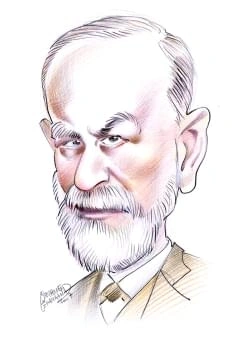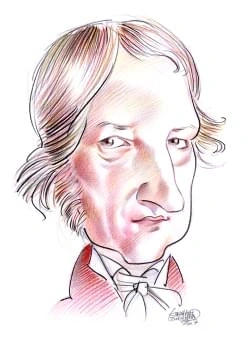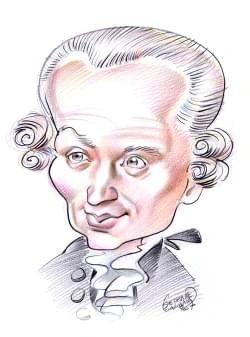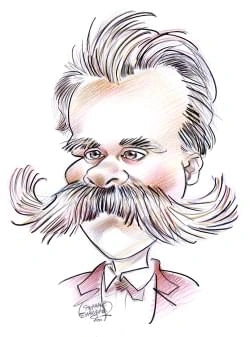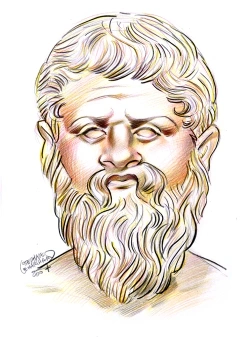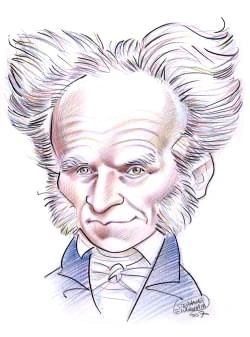398 résultats pour "french"
-
Burke, Edmund
The description of his writings as philosophical is further called into question by their occasional, polemical and often party-political character. However, these early mature writings - and a surviving notebook - reveal a pervasive sceptical epistemological position which is entirely consistent with, and arguably underpins his later political theory. In A Vindication of Natural Society Burke satirized the confident rationalism which the First Viscount Bolingbroke, in his posthumously publis...
-
language in society
2 Acknowledgement First and foremost, I wish to express my deep appreciation to my supervisor Dr. Salah Kaouache for his patience, determination and guidance that have seen me through this project. His comments and clarifications have been for immense help to me in writing this dissertation. I am very grateful to him for his insightful feedback and constant encouragement throughout. I also thank Pr. Zahri Harouni, Pr. Hacene Saadi, Dr.Youcef Beghoul, Dr....
-
Ottawa (city, Ontario) - geography.
National Gallery of Canada, OttawaThe National Gallery of Canada, in Ottawa, houses the foremost collection of Canadian art. Made of glass and granite, it was designedby Canadian-trained architect Moshe Safdie.Wolfgang Kaehler The National Gallery of Canada, designed by Israeli-born, Canadian-trained architect Moshe Safdie, is one of 29 museums in Ottawa. It houses the world’s largest collectionof Canadian art. Across the Ottawa River in Hull is the Canadian Museum of Civilization, which has ext...
- Religion in Canada
-
Nova Scotia - Geography.
summer. Nova Scotia receives an average of more than 1,140 mm (45 in) of rain annually, with the Atlantic shore receiving 1,400 mm (55 in) or more. Most of the provincereceives about 1,900 mm (about 70 in) of snow, and considerable winter precipitation comes in the form of rain or ice storms. The average temperature in January, thecoldest month, is generally about -4°C (about 25°F) near the coast and somewhat colder toward the interior. The average temperature in July, the hottest month, isabout...
-
Nova Scotia - Canadian History.
summer. Nova Scotia receives an average of more than 1,140 mm (45 in) of rain annually, with the Atlantic shore receiving 1,400 mm (55 in) or more. Most of the provincereceives about 1,900 mm (about 70 in) of snow, and considerable winter precipitation comes in the form of rain or ice storms. The average temperature in January, thecoldest month, is generally about -4°C (about 25°F) near the coast and somewhat colder toward the interior. The average temperature in July, the hottest month, isabout...
-
John Adams.
the British authorities. The royal governor, aware of Adams's ability and growing influence, offered him the post of advocate general in the admiralty court. Adams declined the appointment,recognizing it as a bribe to bring him over to the side of the British government. A3 Adams and the Boston Massacre Adams generally supported the popular resistance to the British government, but he did not condone violence or mob action. Adams was greatly disturbed by theBoston Massacre of 1770, an incident...
-
John Adams
the British authorities. The royal governor, aware of Adams's ability and growing influence, offered him the post of advocate general in the admiralty court. Adams declined the appointment,recognizing it as a bribe to bring him over to the side of the British government. A3 Adams and the Boston Massacre Adams generally supported the popular resistance to the British government, but he did not condone violence or mob action. Adams was greatly disturbed by theBoston Massacre of 1770, an incident...
-
-
John Adams - U.
the British authorities. The royal governor, aware of Adams's ability and growing influence, offered him the post of advocate general in the admiralty court. Adams declined the appointment,recognizing it as a bribe to bring him over to the side of the British government. A3 Adams and the Boston Massacre Adams generally supported the popular resistance to the British government, but he did not condone violence or mob action. Adams was greatly disturbed by theBoston Massacre of 1770, an incident...
-
Canada.
Six general landform regions are distinguishable in Canada: the Appalachian Region, the Great Lakes and St. Lawrence Lowlands, the Canadian Shield, the Great Plains,the Canadian Cordillera, and the Canadian Arctic Archipelago. B1 Appalachian Region and Great Lakes and St. Lawrence Lowlands Eastern Canada consists of the Appalachian Region and the Great Lakes and St. Lawrence Lowlands. The Appalachian Region embraces Newfoundland Island, NovaScotia, New Brunswick, Prince Edward Island, and the G...
-
Canada - country.
Six general landform regions are distinguishable in Canada: the Appalachian Region, the Great Lakes and St. Lawrence Lowlands, the Canadian Shield, the Great Plains,the Canadian Cordillera, and the Canadian Arctic Archipelago. B1 Appalachian Region and Great Lakes and St. Lawrence Lowlands Eastern Canada consists of the Appalachian Region and the Great Lakes and St. Lawrence Lowlands. The Appalachian Region embraces Newfoundland Island, NovaScotia, New Brunswick, Prince Edward Island, and the G...
-
Canada - Canadian History.
Six general landform regions are distinguishable in Canada: the Appalachian Region, the Great Lakes and St. Lawrence Lowlands, the Canadian Shield, the Great Plains,the Canadian Cordillera, and the Canadian Arctic Archipelago. B1 Appalachian Region and Great Lakes and St. Lawrence Lowlands Eastern Canada consists of the Appalachian Region and the Great Lakes and St. Lawrence Lowlands. The Appalachian Region embraces Newfoundland Island, NovaScotia, New Brunswick, Prince Edward Island, and the G...
- Édouard Manet.
-
Newfoundland and Labrador - Geography.
Precipitation averages about 1,120 mm (about 44 in) yearly in Newfoundland. In Labrador precipitation varies from about 1,020 mm (about 40 in) in the southeast toabout 510 mm (about 20 in) in the extreme north. Heavy winter snowfalls are common, especially in Newfoundland. D Plant Life About one-third of Newfoundland is forested, and most of the rest of the island is made up of barren areas of reindeer moss and lichens. The forests consist almostentirely of conifers. The most important species...
-
Newfoundland and Labrador - Canadian History.
Precipitation averages about 1,120 mm (about 44 in) yearly in Newfoundland. In Labrador precipitation varies from about 1,020 mm (about 40 in) in the southeast toabout 510 mm (about 20 in) in the extreme north. Heavy winter snowfalls are common, especially in Newfoundland. D Plant Life About one-third of Newfoundland is forested, and most of the rest of the island is made up of barren areas of reindeer moss and lichens. The forests consist almostentirely of conifers. The most important species...
-
New Brunswick - Geography.
Grand Lake, the largest lake in New Brunswick, is in the lowlands, east of Fredericton. Most other lakes are located in the northern and southwestern parts of NewBrunswick. D Climate New Brunswick has a continental climate that is moderated by maritime influences in the coastal areas. As a result, coastal regions are slightly warmer in the winter andslightly cooler in the summer than are interior regions. Annual temperature variations are large, with the January mean usually at least 25 to 28°C...
-
-
New Brunswick - Canadian History.
Grand Lake, the largest lake in New Brunswick, is in the lowlands, east of Fredericton. Most other lakes are located in the northern and southwestern parts of NewBrunswick. D Climate New Brunswick has a continental climate that is moderated by maritime influences in the coastal areas. As a result, coastal regions are slightly warmer in the winter andslightly cooler in the summer than are interior regions. Annual temperature variations are large, with the January mean usually at least 25 to 28°C...
-
Canadian Architecture
I
INTRODUCTION
L'Anse aux Meadows
In around ad 1000 Norse Vikings sailed from Greenland to North America and set up a village on the tip of what is now
the island of Newfoundland's Great Northern Peninsula.
IglooSome Inuit peoples in the Arctic regions of Canada live in domed houses of snow, or igloos, which provide good insulationand protection from wind. The word igloo comes from the Inuit iglu, meaning “house.”George Holton/Photo Researchers, Inc. Canada’s original inhabitants are known as the First Nations. At the time of European arrival, about 40 nations were scattered across Canada. Many of them lived alongthe coasts, where they could fish. These nations can be classified into five major gro...
-
Syria - country.
D Education Primary education is free and compulsory for all children aged 6 through 12. Some 78 percent of the adult Syrian population was estimated to be literate in 2005.Primary schools enrolled 2.8 million pupils in the 2000 school year, and 1.1 million students attended secondary schools and vocational institutes. In 1998, 94,110 Syrian students were enrolled in institutes of higher education. Syria has universities in Damascus, Ḩalab, Ḩim ş, and Al L ādhiq īyah. Also in Damascus isthe Ar...
-
Canada Facts and Figures.
English (official), French (official), Chinese, Italian, Punjabi, Spanish, indigenous languages Religious affiliationsRoman Catholic 43 percent No religion 16 percent United Church 10 percent Anglican 7 percent Baptist 3 percent Lutheran 2 percent Other 19 percent HEALTH AND EDUCATIONLife expectancy Total 80.5 years (2008 estimate) Female 84 years (2008 estimate) Male 77.1 years (2008 estimate) Infant mortality rate 5 deaths per 1,000 live births (2008 estimate) Populat...
-
Ontario - Geography.
governed Ontario’s initial settlement and development. The province’s most important river is the St. Lawrence. Its route was much improved and enlarged by dredgingand canal building in the mid-20th century. This enabled large ocean-going vessels to reach Great Lake ports ( see St. Lawrence Seaway). The Ottawa River was an important early route to the interior for fur traders and timber merchants. The Niagara River, because of its falls, is a great center of hydroelectric power as well as aninte...
-
Ontario - Canadian History.
governed Ontario’s initial settlement and development. The province’s most important river is the St. Lawrence. Its route was much improved and enlarged by dredgingand canal building in the mid-20th century. This enabled large ocean-going vessels to reach Great Lake ports ( see St. Lawrence Seaway). The Ottawa River was an important early route to the interior for fur traders and timber merchants. The Niagara River, because of its falls, is a great center of hydroelectric power as well as aninte...
-
Portraiture
I
INTRODUCTION
Portraiture, visual representation of individual people, distinguished by references to the subject's character, social position, wealth, or profession.
CaracallaCaracalla is a Roman portrait bust in marble of the emperor Marcus Aurelius Antoninus, probably done circa ad 215. Theson of Septimius Severus, Caracalla (as he was known) was a brutal man whose qualities come through in this piece withits dramatic realism. The bust, which is now in the Louvre, Paris, evidently served as the inspiration for Michelangelo’sbust of Brutus more than one thousand years later.Bridgeman Art Library, London/New York The first representations of identifiable ind...
-
Louisiana - geography.
lakes are on the Red River and its tributaries. In addition, small oxbow lakes are numerous in the Mississippi Alluvial Plain. Oxbow lakes are formed when a river cutsthrough the neck of one of its loops, or meanders, thus establishing a shorter course and leaving the former loop as a lake separate from the river. Louisiana also hassome artificially created reservoirs. C Coastline Louisiana’s long and irregular coastline extends along the Gulf of Mexico from the Pearl River on the east to the S...
-
-
Louisiana - USA History.
lakes are on the Red River and its tributaries. In addition, small oxbow lakes are numerous in the Mississippi Alluvial Plain. Oxbow lakes are formed when a river cutsthrough the neck of one of its loops, or meanders, thus establishing a shorter course and leaving the former loop as a lake separate from the river. Louisiana also hassome artificially created reservoirs. C Coastline Louisiana’s long and irregular coastline extends along the Gulf of Mexico from the Pearl River on the east to the S...
-
Civil Law.
Beginning in the 15th century, many European countries extensively colonized North and South America, Africa, and parts of Asia ( see Colonialism and Colonies). Colonial expansion spread the civil law system as colonizers imposed their system of law on their colonies. After achieving independence, some former colonies retainedthe legal system established by the colonizer. For example, the African nation of Senegal has retained the civil law system established by France. Other former colonieschos...
-
Manitoba - Geography.
E Plant Life Forests cover 66 percent of Manitoba. The main forest area is divided into the boreal forest and the mixed-wood forest. The boreal, or northern, forest containsconiferous (cone-bearing) trees, especially white and black spruce, balsam fir, and jack pine. South of the boreal forest is the mixed-wood forest, which contains conifers as well as such deciduous trees as white birch, aspen, poplar, and Manitoba maple. Prairie land is found in the southwest, where the natural vegetation i...
-
Manitoba - Canadian History.
E Plant Life Forests cover 66 percent of Manitoba. The main forest area is divided into the boreal forest and the mixed-wood forest. The boreal, or northern, forest containsconiferous (cone-bearing) trees, especially white and black spruce, balsam fir, and jack pine. South of the boreal forest is the mixed-wood forest, which contains conifers as well as such deciduous trees as white birch, aspen, poplar, and Manitoba maple. Prairie land is found in the southwest, where the natural vegetation i...
-
Claude Monet.
Gardens were a recurrent theme for Monet in the 1870s, and paintings of his own garden dominate his later work. In 1890 he purchased a house in Giverny that hehad been renting for seven years. He began to develop its gardens, introducing an ornamental lily pond and a Japanese-style bridge. These and other features of hisidyllic estate were the subject of a steady output of large decorative paintings. He generally began by painting outdoors, but would then return to his studio to work andrework h...
-
Maine - geography.
temperatures range from 17° to 21°C (62° to 70°F) with the southern interior being the warmest and the east coast and north the coolest. However, daytime summertemperatures may reach the lower 30°s C (lower 90°s F), and temperatures in winter have fallen as low as -44°C (-48°F) in the interior. D2 Precipitation Precipitation (rainfall and snowfall) in Maine is evenly distributed throughout the year. Most areas receive from 860 to 1,020 mm (34 to 40 in) yearly, although parts ofthe coast are som...
-
Maine - USA History.
temperatures range from 17° to 21°C (62° to 70°F) with the southern interior being the warmest and the east coast and north the coolest. However, daytime summertemperatures may reach the lower 30°s C (lower 90°s F), and temperatures in winter have fallen as low as -44°C (-48°F) in the interior. D2 Precipitation Precipitation (rainfall and snowfall) in Maine is evenly distributed throughout the year. Most areas receive from 860 to 1,020 mm (34 to 40 in) yearly, although parts ofthe coast are som...
-
Spanish Empire.
Spain’s royal government quickly imposed its own officials, first to collect taxes and then to administer the colony. Its goal was to assert royal control over both settlersand indigenous peoples. In Spain the government established a House of Trade to supervise colonial affairs and to oversee, license, and tax all trade and commerce. Asthe royal government asserted more authority over colonial activities, Columbus lost effective power, and was eventually replaced by other colonial governors. Wi...
-
-
Spanish Empire .
Spain’s royal government quickly imposed its own officials, first to collect taxes and then to administer the colony. Its goal was to assert royal control over both settlersand indigenous peoples. In Spain the government established a House of Trade to supervise colonial affairs and to oversee, license, and tax all trade and commerce. Asthe royal government asserted more authority over colonial activities, Columbus lost effective power, and was eventually replaced by other colonial governors. Wi...
-
Thomas Jefferson
I
INTRODUCTION
Thomas Jefferson (1743-1826), third president of the United States (1801-1809) and author of the Declaration of Independence.
Jefferson was a poor speaker, but his literary talents made him a highly valued member of committees when resolutions and other public papers were drafted. Heemerged as the recognized author of the patriot cause in Virginia and indeed in the whole of the colonies. Jefferson's first public paper, however, was considered toostiff and formal, and it was rewritten. The paper was a response to the greeting of the new governor, Lord Botetourt, to the General Assembly. Jefferson, who nevertook criticis...
-
Thomas Jefferson.
Jefferson was a poor speaker, but his literary talents made him a highly valued member of committees when resolutions and other public papers were drafted. Heemerged as the recognized author of the patriot cause in Virginia and indeed in the whole of the colonies. Jefferson's first public paper, however, was considered toostiff and formal, and it was rewritten. The paper was a response to the greeting of the new governor, Lord Botetourt, to the General Assembly. Jefferson, who nevertook criticis...
-
Thomas Jefferson
Jefferson was a poor speaker, but his literary talents made him a highly valued member of committees when resolutions and other public papers were drafted. Heemerged as the recognized author of the patriot cause in Virginia and indeed in the whole of the colonies. Jefferson's first public paper, however, was considered toostiff and formal, and it was rewritten. The paper was a response to the greeting of the new governor, Lord Botetourt, to the General Assembly. Jefferson, who nevertook criticis...
-
Thomas Jefferson - USA History.
Jefferson was a poor speaker, but his literary talents made him a highly valued member of committees when resolutions and other public papers were drafted. Heemerged as the recognized author of the patriot cause in Virginia and indeed in the whole of the colonies. Jefferson's first public paper, however, was considered toostiff and formal, and it was rewritten. The paper was a response to the greeting of the new governor, Lord Botetourt, to the General Assembly. Jefferson, who nevertook criticis...
-
Bullfighting.
V THE GREAT MATADORS Ranking the great matadors is highly subjective. Most aficionados would agree, however, that the following names must be included in any list of the modern greats:Rodolfo Gaona, Armillita (Fermín Espinosa), and Arruza, of Mexico; and Belmonte, Manolete, and Antonio Ordoñez, of Spain. Few South Americans have made an impacton the international bullfighting world. Although several North Americans have attempted careers as matadors, only Sidney Franklin and John Fulton Short m...
-
Mississippi - geography.
The climate of Mississippi is characterized by long, hot, and humid summers and generally mild winters. The higher lands in the northeast are usually cooler than otherareas of the state. D1 Temperature Average January temperatures range from about 6° C (about 42° F) in northeastern Mississippi to about 12° C (about 54° F) along the Gulf Coast. No part of the stateis entirely free from freezing temperatures, but prolonged periods of extreme cold rarely occur. Temperatures more than 15° C (30° F)...
-
Mississippi - USA History.
The climate of Mississippi is characterized by long, hot, and humid summers and generally mild winters. The higher lands in the northeast are usually cooler than otherareas of the state. D1 Temperature Average January temperatures range from about 6° C (about 42° F) in northeastern Mississippi to about 12° C (about 54° F) along the Gulf Coast. No part of the stateis entirely free from freezing temperatures, but prolonged periods of extreme cold rarely occur. Temperatures more than 15° C (30° F)...
-
-
Vermont - geography.
Forests cover 78 percent of Vermont. Most of the trees are deciduous, principally the maple, elm, birch, beech, oak, hickory, ash, cherry, and butternut. The state treeis the sugar maple, which provides Vermont’s famous maple syrup. Conifers are common in some mountain areas and include mainly the white pine, red spruce,hemlock, and cedar. A great variety of ferns have been found within the state. Among the more common wildflowers that grow in Vermont are anemones, arbutuses,violets, lilacs, dai...
-
Vermont - USA History.
Forests cover 78 percent of Vermont. Most of the trees are deciduous, principally the maple, elm, birch, beech, oak, hickory, ash, cherry, and butternut. The state treeis the sugar maple, which provides Vermont’s famous maple syrup. Conifers are common in some mountain areas and include mainly the white pine, red spruce,hemlock, and cedar. A great variety of ferns have been found within the state. Among the more common wildflowers that grow in Vermont are anemones, arbutuses,violets, lilacs, dai...
-
Canadian Forces.
As the Land Force Command component of the CF, the Canadian army is responsible for land combat and for physically protecting people and land-based resources. Itis the component of the CF most often called on to support international military operations and peacekeeping missions and to maintain order in times of civil unrest. A Organization The 20,900 personnel who comprise the army’s regular force are organized into four geographically based areas. Land Force Atlantic includes the provinces of...
-
Michigan - geography.
The interior location of Michigan in the northern part of North America results in a continental climate, characterized by four definite seasons with moist, mild to hotsummers and snowy, cold winters. Winds off of Lakes Michigan and Superior in winter create heavy snow accumulations in nearby areas. The tempering effects of LakeMichigan account for the presence of the state’s famous fruit-growing belt along the lake’s shore. Since the water is colder than the land in spring, the westerly windspa...
-
Michigan - USA History.
The interior location of Michigan in the northern part of North America results in a continental climate, characterized by four definite seasons with moist, mild to hotsummers and snowy, cold winters. Winds off of Lakes Michigan and Superior in winter create heavy snow accumulations in nearby areas. The tempering effects of LakeMichigan account for the presence of the state’s famous fruit-growing belt along the lake’s shore. Since the water is colder than the land in spring, the westerly windspa...
-
Indiana - geography.
Michigan in Michigan. There are about 1,000 small natural lakes in Indiana, chiefly in the northern part of the state. The largest is Lake Wawasee, which covers almost 13 sq km (5 sq mi). Inthe central part of the state there are several lakes that were created behind dams on a number of smaller streams. They include Monroe Lake, near Bloomington; Geistand Eagle Creek reservoirs, northeast and northwest of Indianapolis; and Mississinewa and Huntington reservoirs, north of Marion. C Climate Most...
-
Indiana - USA History.
Michigan in Michigan. There are about 1,000 small natural lakes in Indiana, chiefly in the northern part of the state. The largest is Lake Wawasee, which covers almost 13 sq km (5 sq mi). Inthe central part of the state there are several lakes that were created behind dams on a number of smaller streams. They include Monroe Lake, near Bloomington; Geistand Eagle Creek reservoirs, northeast and northwest of Indianapolis; and Mississinewa and Huntington reservoirs, north of Marion. C Climate Most...
-
Alabama (state) - geography.
indentations along the coast are measured, the state’s shoreline is 977 km (607 mi) long. It includes the shores of Mobile Bay, an inlet 56 km (35 mi) long at the mouthof the Mobile River. Barrier beaches partly block the entrance to the bay, leaving narrow openings on either side of Dauphin Island. Dauphin and other islands alongAlabama’s coast west of Mobile Bay are separated from the mainland by Mississippi Sound. D Climate Alabama has a humid subtropical climate, with short, relatively mild...
-
-
Alabama (state) - USA History.
indentations along the coast are measured, the state’s shoreline is 977 km (607 mi) long. It includes the shores of Mobile Bay, an inlet 56 km (35 mi) long at the mouthof the Mobile River. Barrier beaches partly block the entrance to the bay, leaving narrow openings on either side of Dauphin Island. Dauphin and other islands alongAlabama’s coast west of Mobile Bay are separated from the mainland by Mississippi Sound. D Climate Alabama has a humid subtropical climate, with short, relatively mild...
-
Middle Ages .
Saints were very important in Late Antiquity. They were considered both models of virtue and powerful miracle workers. One of the most well-known saints of the periodwas Saint Anthony. Anthony gave away all his possessions and left his hometown in Egypt to live alone in the desert and pray. Anthony was one of the first Christianmonks. The word monk comes from a term meaning 'alone.' Gradually Anthony attracted followers, and he eventually became the center of a whole community of monks who wis...
}})
